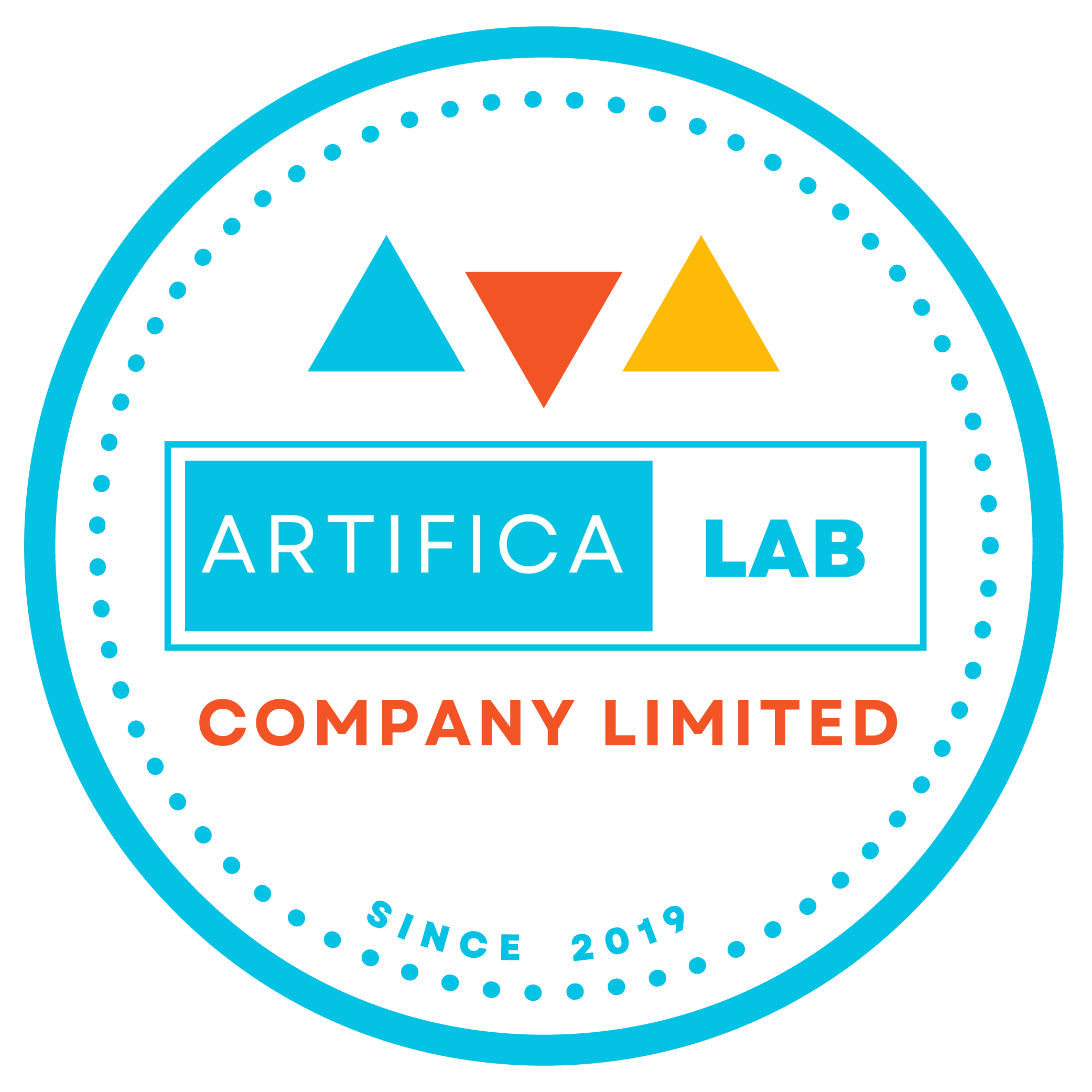The Future of Data Analytics: Innovations and Trends with Microsoft Fabric
Data analytics is at the heart of digital transformation, enabling businesses to derive actionable insights from vast amounts of data. As the volume, variety, and velocity of data continue to grow, innovative solutions like Microsoft Fabric are paving the way for the future of data analytics. Microsoft Fabric is a comprehensive data platform that integrates various data services, providing a unified environment for data ingestion, processing, storage, and analysis. This blog explores the latest innovations and trends in data analytics with Microsoft Fabric, highlighting how it is shaping the future of the industry.
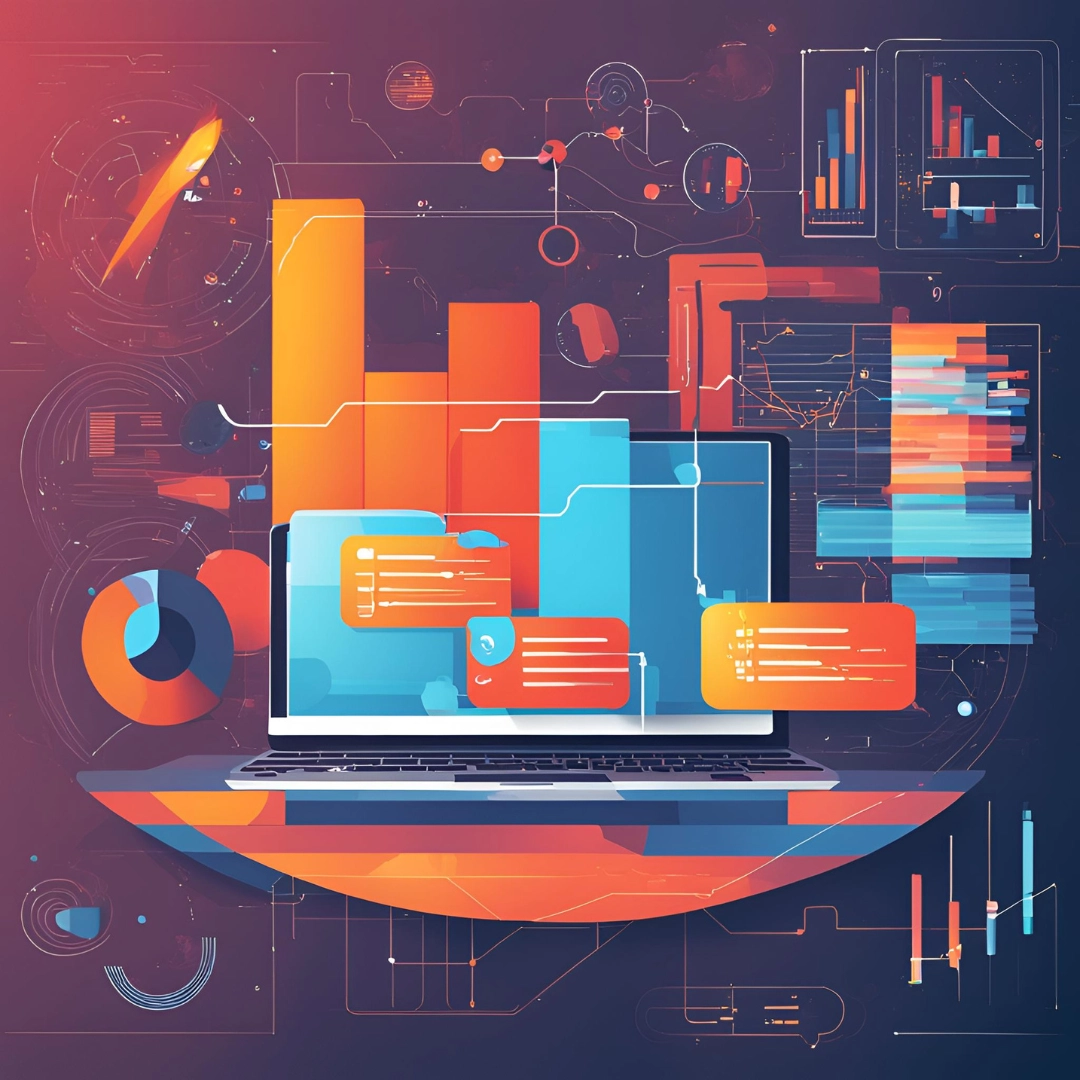
"Microsoft Fabrics is the future of Data Analytics available in this present! The tech is so innovative, with all unified experience for Data Scientist, Data Engineers, Business Analyst and for every other people who have to analyze and perform data-driven decisions!"
— Mr. Thu Ta Naing, Founder & CEO (ARTIFICALAB LTD)
Architecture of Microsoft Fabric
Microsoft Fabric is built on a foundation of Software as a Service (SaaS), integrating both new and existing components from Power BI, Azure Synapse Analytics, Azure Data Factory, and more into a unified environment. The Fabric architecture includes the following components as follows:
- Microsoft Power BI
- Data Factory
- Data Activator
- Industry Solutions
- Real-Time Intelligence
- Synapse Data Engineering
- Synapse Data Science
- Synapse Data Warehouse

Figure: Microsoft Fabric, Image courtesy of Microsoft Azure
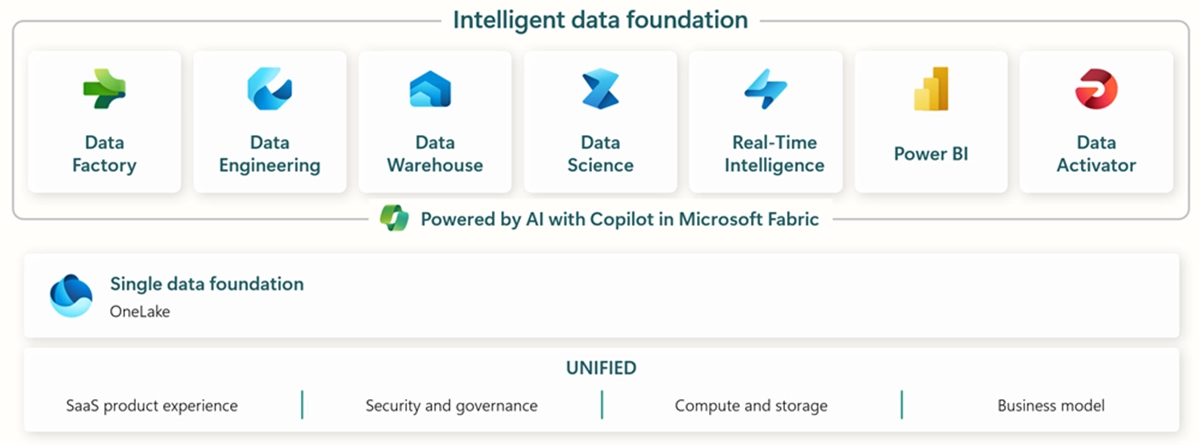
Figure: Microsoft Fabric Architecture, Image courtesy of Microsoft Azure
Data Integration in Microsoft Fabric:
Tools for data ingestion, transformation, and movement, ensuring seamless data flow across the platform.
Data Engineering in Microsoft Fabric:
Capabilities for building and managing data pipelines, supporting complex data workflows.
Data Warehousing in Microsoft Fabric:
Scalable storage solutions for structured data, optimized for query performance and analytics.
Data Science in Microsoft Fabric:
Integration with Azure Machine Learning for developing and deploying machine learning models.
Real-Time Analytics in Microsoft Fabric:
Support for real-time data processing and event-driven architectures.
Business Intelligence in Microsoft Fabric:
Advanced analytics and visualization tools, including Power BI, for generating insights and reports.
Governance and Security in Microsoft Fabric:
Centralized management of data governance, security policies, and compliance across all components
Innovations in Microsoft Fabric that you should know!
Unified Data Platform in Microsoft Fabric:
Microsoft Fabric offers a unified data platform that brings together data integration, data engineering, data warehousing, data science, and business intelligence. This integration simplifies the data analytics process, allowing organizations to manage their entire data lifecycle within a single platform.
Real-Time Analytics in Microsoft Fabric:
With the increasing demand for real-time insights, Microsoft Fabric provides robust capabilities for real-time data processing and analytics. This enables businesses to make timely decisions based on the most current data, enhancing their agility and responsiveness.
Advanced AI and Machine Learning Integration in Microsoft Fabric:
Microsoft Fabric seamlessly integrates with Azure Machine Learning, allowing data scientists to build, train, and deploy machine learning models directly within the platform. This integration accelerates the development of AI-driven solutions and enhances predictive analytics capabilities.
Scalable Data Processing in Microsoft Fabric:
Microsoft Fabric leverages the power of Azure’s cloud infrastructure to provide scalable data processing capabilities. Whether dealing with terabytes or petabytes of data, the platform can scale to meet the demands of large-scale data analytics workloads.
Enhanced Data Security and Compliance in Microsoft Fabric:
Security and compliance are paramount in data analytics. Microsoft Fabric includes advanced security features such as encryption, access controls, and compliance certifications, ensuring that data is protected and regulatory requirements are met.
How OneLake Works in Microsoft Fabric?
OneLake is a core component of Microsoft Fabric, designed to be the single, unified data lake for an entire organization. Here’s how it works:
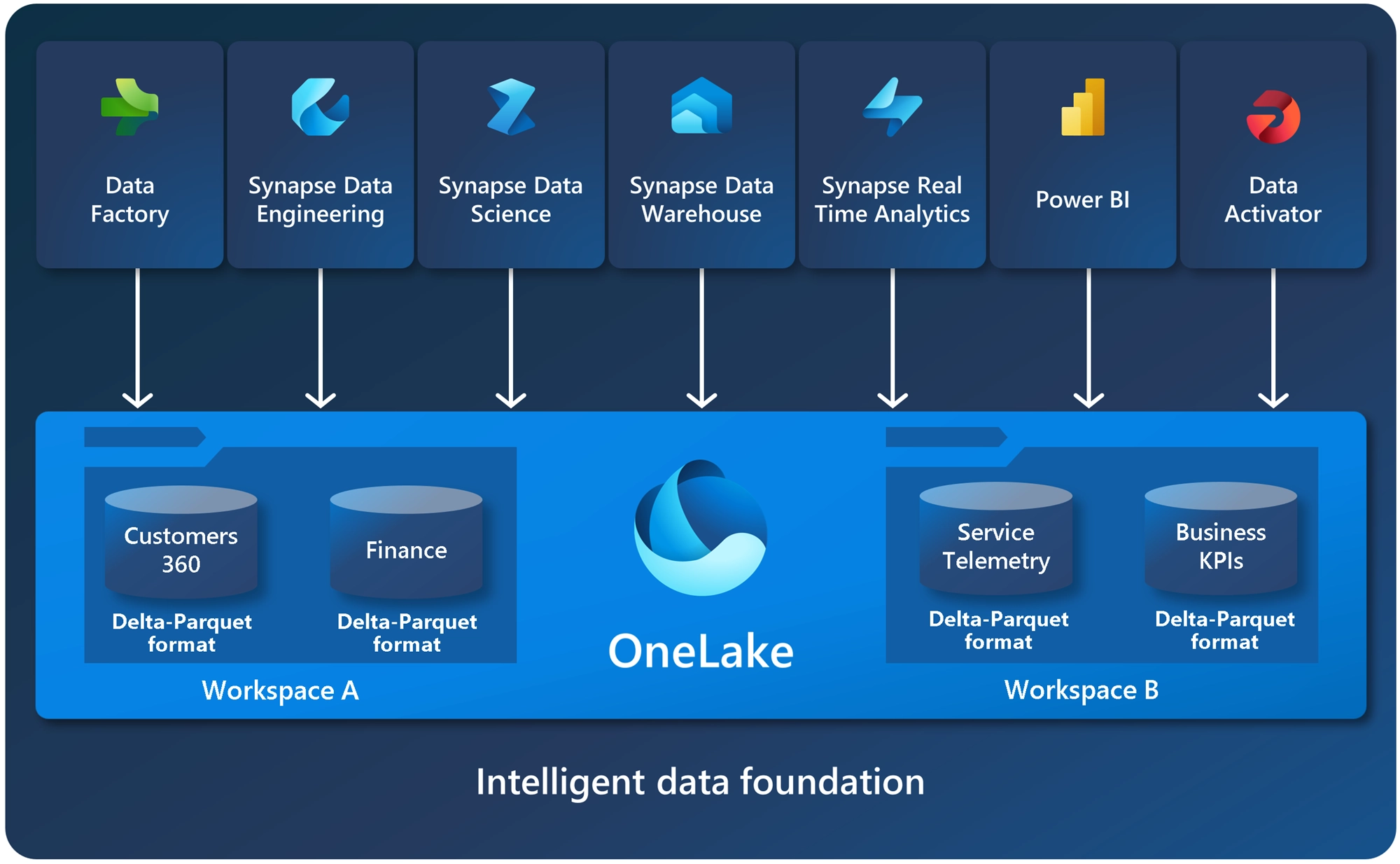
Figure: OneLake, Image courtesy of Microsoft Azure
Automatic Provisioning (OneLake):
Every Microsoft Fabric tenant automatically includes OneLake, with no additional setup required. This simplifies the process of managing data storage.
Open and Flexible (OneLake):
OneLake is built on Azure Data Lake Storage (ADLS) Gen2, supporting various file types and formats. It integrates with multiple analytical engines, allowing data to be used across different tools and platforms.
Shortcuts for Data Reuse (OneLake):
OneLake includes a feature called shortcuts, which allows data to be reused without copying it. This reduces redundancy and improves efficiency.
Introduction to Direct Lake in Microsoft Fabric
Direct Lake is a powerful feature in Microsoft Fabric that enhances data analytics by allowing data to be loaded directly from OneLake into Power BI without the need for intermediate storage or duplication. Here’s how it works:
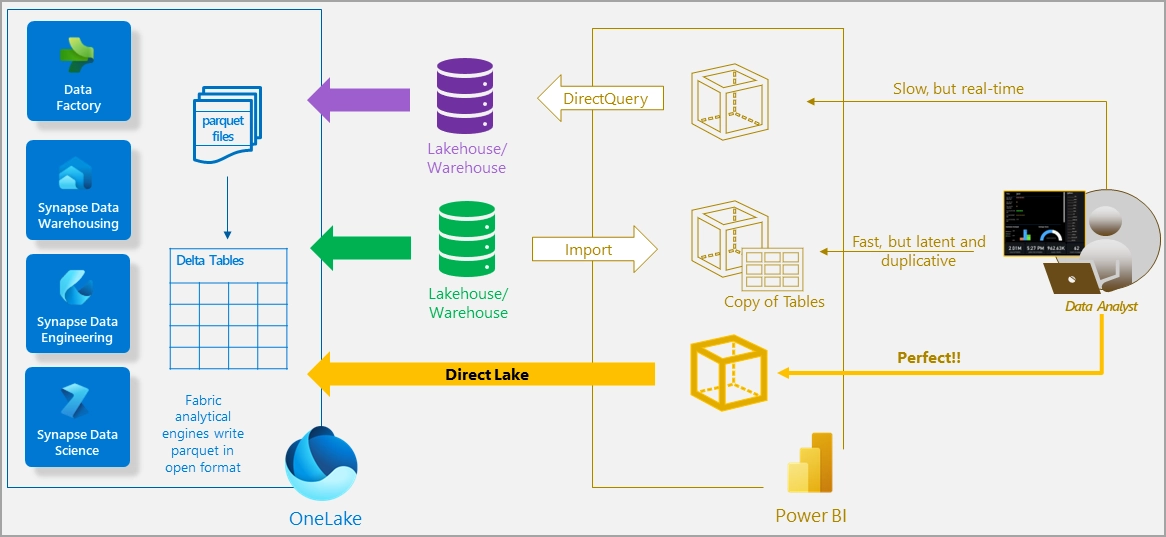
Figure: Direct Lake, Image courtesy of Microsoft Azure
Direct Data Access (Direct Lake):
Direct Lake mode enables Power BI to load parquet-formatted files directly from OneLake, bypassing the need to query a lakehouse or warehouse endpoint.
Performance Optimization (Data Lake):
This mode combines the benefits of DirectQuery and import modes, providing fast performance without the need for data import. Changes at the data source are immediately reflected in Power BI.
Security Integration (Data Lake):
Direct Lake supports Power BI’s row-level and object-level security, ensuring that users only see the data they are authorized to access.
Real-World Use Cases in Microsoft Fabric
Retail Industry
A global retail chain uses Microsoft Fabric to analyze customer behavior and optimize inventory management. By integrating data from various sources, including sales transactions, social media, and customer feedback, the company can make data-driven decisions to enhance customer experience and increase sales.
Healthcare Sector
A healthcare provider leverages Microsoft Fabric to improve patient care and operational efficiency. By analyzing electronic health records (EHR), patient feedback, and operational data, the provider can identify trends, predict patient needs, and streamline processes, leading to better patient outcomes and reduced costs.
Financial Services
A financial institution uses Microsoft Fabric to detect fraudulent activities and ensure regulatory compliance. By analyzing transaction data, customer behavior, and external data sources, the institution can identify suspicious activities in real-time and take proactive measures to prevent fraud.
Manufacturing
A manufacturing company utilizes Microsoft Fabric to optimize production processes and reduce downtime. By analyzing data from IoT sensors, production logs, and maintenance records, the company can predict equipment failures, schedule preventive maintenance, and improve overall efficiency.
Trends in Data Analytics with Microsoft Fabric
Data Democratization
One of the key trends in data analytics is the democratization of data, making it accessible to a broader range of users within an organization. Microsoft Fabric supports this trend by providing intuitive tools and interfaces that enable business users, analysts, and data scientists to collaborate and derive insights from data.
Hybrid and Multi-Cloud Environments
As organizations adopt hybrid and multi-cloud strategies, Microsoft Fabric offers seamless integration with various cloud services and on-premises systems. This flexibility allows businesses to leverage the best of both worlds, optimizing their data analytics infrastructure.
Data Governance and Management
Effective data governance and management are critical for ensuring data quality and compliance. Microsoft Fabric includes comprehensive data governance features, such as data cataloging, lineage tracking, and policy enforcement, helping organizations maintain control over their data assets.
Edge Computing and IoT Analytics
The rise of edge computing and the Internet of Things (IoT) is driving the need for analytics at the edge. Microsoft Fabric supports edge analytics, enabling organizations to process and analyze data closer to its source, reducing latency and improving decision-making.
Augmented Analytics
Augmented analytics leverages AI and machine learning to automate data preparation, insight generation, and visualization. Microsoft Fabric incorporates augmented analytics capabilities, empowering users to uncover hidden patterns and trends in their data with minimal effort.
CONCLUSION
Microsoft Fabric is at the forefront of innovations and trends in data analytics, providing a comprehensive and scalable platform for modern data-driven organizations. By integrating advanced AI, real-time processing, and robust security features, Microsoft Fabric is shaping the future of data analytics. As businesses continue to navigate the complexities of the digital age, leveraging the capabilities of Microsoft Fabric will be essential for staying competitive and driving growth.




